When you think of your dream homestead, what’s the first thing that comes to mind? If you’re like me, you think of a beautiful, lush garden in your peaceful rural oasis. A lot of us become homesteaders because we want to live life at a slower pace and really take the time to enjoy the simple things. Part of this lifestyle is learning to live off the land and really enjoy what nature has to give. When it comes to growing a garden, it is so important to respect the natural environment and support the entire ecosystem surrounding our garden, which is why organic gardening is a must for all homesteaders.
You might think that growing a garden is simple – plant some seeds, water occasionally and enjoy the results! On the other hand, you might get confused and overwhelmed and aren’t sure where to start.
Organic gardening might seem intimidating if you are just getting into gardening. But don’t worry – there is nothing to be afraid of! There are definitely some things you need to know in advance and you will need to make sure you are prepared, but you are in exactly the right place! We will go through everything you need to know to create the garden of your dreams.
We’ll cover essential topics like knowing your climate and growing zone, choosing the right plants for companion planting, and organic pest control and fertilization. Whether you’re a homesteader looking to produce your own food or just want to start using more organic methods in your garden, this guide is for you!
What is Organic Gardening?
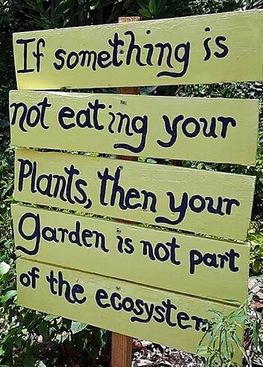
Organic gardening is a type of gardening that focuses on growing plants without the use of any chemical pesticides or synthetic fertilizers. This means using natural methods to manage the garden, such as composting, mulching, and companion planting. Organic gardens are often part of a larger homesteading lifestyle, which emphasizes self-sufficiency and a close connection to the land.
While organic gardening takes some extra effort, many gardeners find it to be more rewarding and fulfilling than traditional gardening. In addition, organic gardening is healthier for the environment because it focuses on incorporating the garden into the surrounding environment and helping to maintain a thriving ecosystem.
Benefits of Organic Gardening
There are so many benefits of gardening in general, and gardening organically is even better! Not only does it benefit the environment, but it is so good for your mind, body and soul to know that you are making positive environmental impacts while producing sustainable, nutritious food and creating a beautiful landscape to enjoy now and in the future.
1. You are not introducing toxic chemicals into the food chain
This is what I love the most about organic gardening. Chemical pesticides are meant to, well, kill pests. The problem with some of these compounds is that they are toxic to other beneficial species as well, including bees, butterflies and other pollinators. This can spread quickly up the food chain to birds, small mammals and more. Organic gardeners add to the existing environment, not disrupt it.
2. Improved soil health
Adding organic matter such as manure and compost helps to build up the soil’s nutrient levels and improve its structure. Your garden will thrive in rich, nutrient-heavy soil and it will help reduce erosion over time.
3. Better quality produce
Organically-grown fruits and vegetables are thought to be of better quality and have higher levels of vitamins and minerals. Or maybe it’s just a peace of mind thing. Either way, you are in control of what comes in contact with your plants. You won’t have to spend that extra money at the grocery store buying “organic”-labeled produce; in fact, there are a lot of loopholes that companies use to get away with using pesticides and herbicides on their produce and still be legally allowed to call it “organic.” Any time you buy produce from the grocery store, you have no idea what kinds of chemicals were added to it. When you grow organically at home, you are in complete control.
4. Excellent for your mental and physical health
It’s no surprise that tending to a garden is great for your mental and physical health. Caring for a garden can be a relaxing and therapeutic activity, and it is a great way to get outside to get some exercise and enjoy the outdoors. Plus, you have something to show for it! I love sharing and swapping some of my garden bounty with friends, family and neighbors.
What You Need to Know Before Starting Your Garden
There are a few things you should know before you fully jump in to the beginning of your organic gardening adventure. Knowing these things will help you make the right choices, avoid costly mistakes and maximize your garden’s output. Of course, your first year will be mainly a learning experience, and you will get better and better each year! I am always learning something new every year and making sure to note it down to refine my garden more and more as the years go on.
1. Know your plant hardiness zone
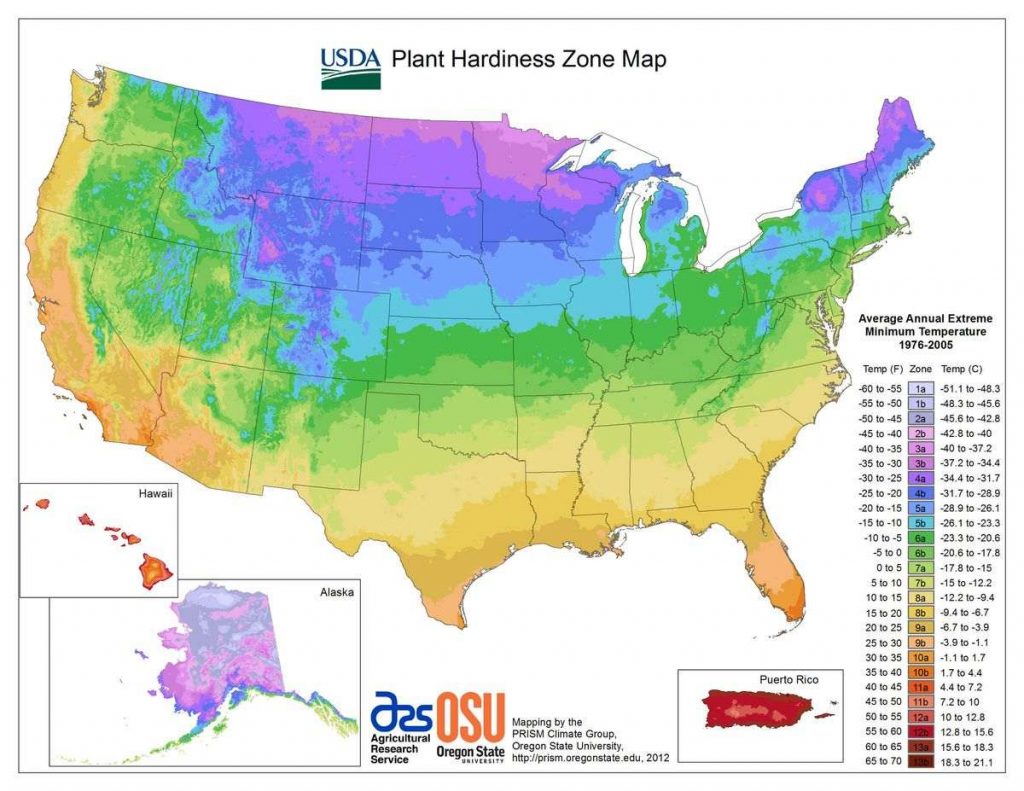
This is one of the most important pieces of information and the first step to effective organic gardening. You need to understand your climate.
Plant hardiness zones are based on geographical location and average annual minimum winter temperature. Each zone is marked with a number. The higher the number, the warmer the location is. Knowing your zone helps determine average first and last frost dates as well.
To find out what zone you’re in, visit this link to find plant hardiness zones within the United States and Canada.
This is especially helpful when it comes to growing perennial plants. What are perennials, you might ask? Well, that leads me to my next point:
2. Terminology
a. Annual vs. Perennial (and one more)
Before you start ordering seeds and buying plants at the garden center, you’ll want to make sure you know the difference between annual vs. perennial plants.
Annuals live their entire life cycle over one growing season. They germinate, grow, flower, set seed and die off in one season. These plants are usually the bright and showy flowers, and most vegetables and herbs are considered annuals as well.
Perennials, on the other hand, live for three or more growing seasons and are more cold hardy and deeply rooted. They usually have a shorter blooming season and require some more maintenance like pruning and dividing, but they are a great long-term investment for your landscape. As organic gardeners, we like to focus on bringing in perennials that are native to the area so that the wildlife can recognize them as a food source (if providing a food source for birds and other wildlife is part of your goals).
Biennials are plants that grow for two seasons, hence the name, but do not bloom until the second year. That means they will go to seed after the second year, so in two years after that, you will enjoy the next generation’s blooms. Gardeners can set up a schedule to stagger their biennial plants in order to enjoy the beautiful flowers every year and not worry about replanting.
Regardless of which type of plant you are getting, it is important to be aware of invasive species. These species often spread fast and can quickly overtake large areas and choke out native species. Oftentimes, wildlife cannot recognize invasive species as a natural food source, so you can see how it quickly depletes and disrupts the natural ecosystem – something that we, as organic gardeners, are actively working against!
b. Open-pollinated, heirloom, hybrid, organic and GMO – what’s the difference?
You’ve probably heard many of these terms before, especially when shopping for produce or looking at seed packets. You’ll definitely want to know what each of these terms mean, especially if you are planning to save seeds for planting next year. Without overloading you with too much information, here are the basic facts you need to know:
Open-Pollinated
These seeds come from plants grown and pollinated naturally, either by wind or insect. Because of this, plants are bred randomly, since bees and other pollinators collect all kinds of pollen and visit all sorts of plants during their daily travels.
These plants will be true to seed if kept away from other plants of the same species (they can cross-pollinate if they are close by). You can save these seeds.
Heirloom
Heirloom seeds and heirloom plants are simply open pollinated plant varieties that have been passed down from generation to generation for at least 50 years. When you grow heirloom seeds, you share a connection with all those gardeners over the years who helped develop these long-standing varieties. All heirloom plants are open pollinated, but not all open pollinated plants are heirlooms. You know what I mean?
These are typically the best of the best varieties to plant. You can save these seeds.
Hybrid
These are varieties that are crossbred to keep certain traits such as disease resistance, higher yields, compact size, etc. Some examples include stargazer lilies, Meyer lemons, sweet corn and seedless watermelons. There are also hybrid varieties of pretty much every vegetable available in most seed catalogues for things like compact size, early yields, seedless varieties, certain colors and flavors, etc. One thing to keep in mind is that hybrid does not mean GMO. Hybrid seeds are crossbred naturally, while GMO seeds have had their genetic material altered in a lab.
You might hear the terms F1 and F2 hybrid. This just refers to the generation of the hybrid plant. F1 is the first generation and F2 is the second generation. The further down the generation, the more unstable the plant becomes. Because you can’t guarantee the plant will be true to seed, you cannot save these seeds.
Organic
The term organic here is an all-encompassing term that refers to seeds that are non-GMO, come from organic plants, and have not been treated with pesticides or fertilizers considered to be non-organic. This is not a mutually exclusive term; organic seeds can be heirloom, open-pollinated or hybrid.
GMO
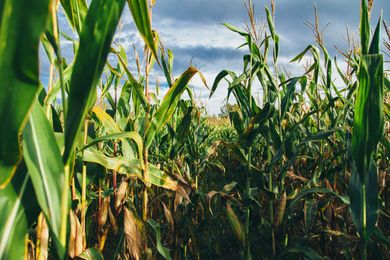
GMO stands for “genetically modified organism.” GMO seeds come from plants whose genetic material has been altered artificially in a lab. These plants are created for specific desirable characteristics similar to hybrid plants, but the difference is that hybrid plants are crossbred naturally and genetically modified plants have been created artificially. GMO seeds are also patented and considered property of the company that engineered them.
For the most part, GMO seeds are used in large-scale commercial operations for crops such as corn, soybeans, cotton, canola and sugar beets.
Getting Started
Select a site
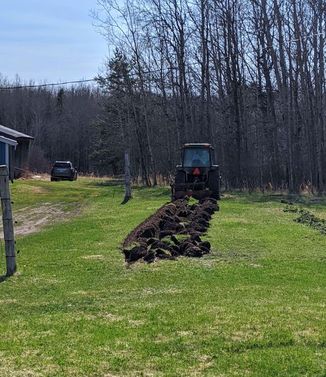
If you’re just getting started with a brand new garden, you’ll need to pick an ideal location. Sunlight is crucial; you’ll need a spot that gets at least 6-8 hours of sunlight a day. Make sure there are no nearby trees or buildings that get in the way of the afternoon sun. If the spot does get a little shade, that’s no problem, as some vegetables and herbs can tolerate partial shade.
Ideally, you’ll want to find a spot with well-draining and nutrient-rich soil. As you can see from our picture, that isn’t always possible with brand new gardens. We had our neighbor come by and plow it right out of the ground! It will take a few years to gradually get all the deep roots out and mix in enough organic material for great soil, but you can certainly start this way. See if you have any neighbors with manure they could give you to help improve your soil. Lucky for us, our neighbor had plenty of manure to give us, too!
You should also make sure the garden is close enough to a water source so you aren’t dragging your hose around constantly. I like my garden being close to the house as well so that I can gaze at it lovingly while I am washing dishes in the kitchen, dreaming about being outside.
The alternative: raised beds
If digging a garden out of the ground is not for you, a great alternative is to use raised beds. They are much easier to maintain and keep weed-free, and you can easily walk between them for easy access. Plus, I love the look of raised beds. I think it can be very aesthetically pleasing!
There is no one right way to plan your organic garden. You can do a mix of in-ground, raised beds and container gardening if you really want to. It is all about how you envision your dream garden!
Companion planting for organic gardening
Companion planting is essential for organic gardening. Since we won’t be using pesticides, we can instead look at which plants help each other out by growing next to each other. For example, basil and tomatoes pair well together, as the basil helps repel some pests that attack tomatoes and it helps with flavor and growth. Dill repels certain pests like cabbage worms that attack the brassica family, so it is a good idea to plant it near cabbage, Brussels sprouts, broccoli, etc. On the flip side, it should not be planted near carrots, since it is in the same family and can cross-pollinate. It can also stunt the growth of carrots.
For more in-depth information, check out this guide to companion planting.
Crop rotation
Crop rotation is another important thing you need to know as an organic gardener. It is important to rotate crops every year so that you do not accidentally spread disease or deplete the nutrients in one area. This will ensure your soil stays fresh and healthy and you will keep pests and disease to a minimum. I always make myself a spreadsheet and a diagram of what crops are planted where so that I can plan to change things up for the next year.
Pick your plants
This is where the fun begins! Plant season is my absolute favorite time of year – there is something so wonderful about looking through the season’s seed catalogues or (my personal favorite) spending a nice afternoon at the garden center picking out this season’s plants. I do a mix between buying my favorite staple plants at the garden center and starting certain things from seed.
If you’re just starting out, there is plenty of information out there about some easy plants to grow for beginners. Once you start getting the hang of it, the possibilities are endless! I’d recommend starting with seedlings from the local garden center because it’s easier for beginners, but you run the risk of not knowing what kind of chemicals, if any, the seedlings have been exposed to.
When and where to start your seeds
If you are starting your plants from seed, that’s great! You can get a lot of bang for your buck with a package of seeds, or if you are germinating some seeds you’ve saved already, that’s even better!
There are some very important things to keep in mind, and I’ve seen a lot of beginners fail because of this.
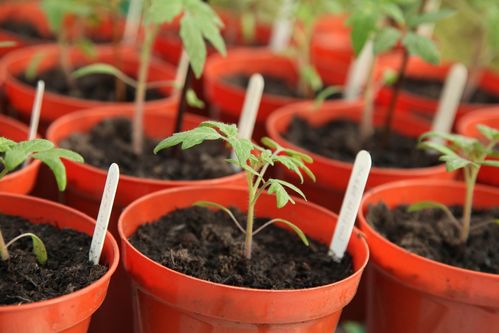
First, not all seeds do well when started indoors. Things like peas, beans, radishes and carrots should always be directly sown once the threat of frost has passed (except for peas, which actually do better in cold soil at the beginning of the spring as soon as the ground is no longer frozen). Tomatoes, peppers, cucumbers and squash are some examples of plants that do well when started indoors – especially plants like tomatoes and peppers that need a rather long growing season.
When you start seeds indoors, I highly recommend using artificial grow lights and a fan, because these plants need a lot of light and wind movement or they will become weak and spindly. Too many people start their seeds in a windowsill and think it will be enough – I won’t say that it will never work that way, as I know that’s how it has been done for many years before grow lights became popular, but the best way to get strong, healthy seedlings is with a bit of investment. I use a whole grow tent setup (I swear it’s for my tomatoes!) to give my plants a head start on the growing season when it’s still too cold to plant outside.
If you are starting indoors, remember to harden them off a few days before you move them outside. Hardening off means getting them accustomed to the outdoors conditions. Plants can actually get sunburned if you go from inside to immediately outside in the direct sun. The temperature fluctuations between day and night can also shock them and kill them. The best way to do it is to bring them outside for a few hours during the day and back in at night. Do this for a few days, with every day being a little longer, and then they will finally be ready to transplant outside.
Maintaining Your Garden
Now that you have your organic garden started, you need to make sure it is well maintained. Fortunately, it’s not that complicated. You’ll need to make sure your plants get lots of water and sunlight, but make sure not to overwater them. You will also need to feed your garden once in a while and keep on top of pests and weeds.
Organic pest control
Just because you are not using pesticides does not mean your garden has to be full of pests! There are some great organic methods for dealing with pests, including the following:
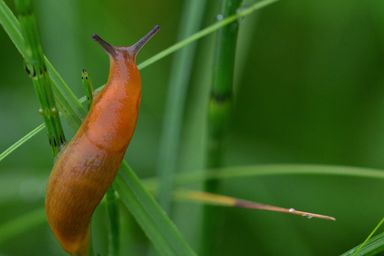
- Spreading eggshells around the base of your plants (helps deter slugs and snails)
- Spraying soapy water on infested foliage (works great on aphids, mites and other soft-shelled insects – make sure to use a natural castile soap like Dr. Bronner’s and not a detergent like Dawn, which is not actually true soap)
- Using diatomaceous earth (works great on insects with hard exoskeletons like ants and beetles as well as worms, mites, and lots of others)
- Using beneficial nematodes (great for underground pests like grubs and worms)
You can also use predatory insects like praying mantises and ladybugs. You can even order them online and introduce them into your garden all at once!
Finally, as mentioned before, companion planting has many benefits, including natural pest control. Make sure you take advantage of some of these methods!
Organic fertilizer
There are lots of organic alternatives to that bright blue powder you usually see. There are kelp and fish fertilizers on the market, or you can add your own organic material like manure, compost, or your own compost tea.
Organic weed control
I think most gardeners, organic or not, prefer not to use weed killer in their food gardens. After all, why would you add chemicals that kill plants into your garden full of plants? There are ways to slow the growth of weeds like using a tarp at the beginning of the year, using landscape fabric or mulching, but nothing works as well as good ol’ elbow grease.
I know it’s probably the least enjoyable part of gardening, but hey – put on a hat and some sunscreen, bring out a drink and a portable speaker, and make an afternoon out of it! It’s better than being inside all day, isn’t it?
If you’re just starting out a brand new in-ground garden, it may take a few years of heavy weeding to get the weeds down to a manageable level. At least that’s the case for us here. If you find that the weeds are growing faster than you can pull them out, at the very least try to rip them apart when they start flowering to prevent them from going to seed and spreading all over your garden for next year.
Harvesting Your Garden
The best part of organic gardening is enjoying your harvest. There’s nothing like eating that first cherry tomato of the year right off the vine or bringing in a big bowl of fresh veggies to have with supper each day. Gardening really is the gift that keeps on giving. In fact, you’ll probably start getting overwhelmed very quickly and you may need to start giving things away to friends, family or coworkers! (Did you hear that August 8th is National Sneak Some Zucchini Onto Your Neighbor’s Porch Day?)
I love having a surplus of produce from the garden. The taste of fresh, organic fruits and veggies is truly unmatched. And it’s so fun to just search “recipes with _____” and try out something new! It also opens you up to the world of canning and preserving. Oh boy is that ever a lot to get into. Once you start canning, you’ll become addicted and you won’t be able to stop! Fortunately, most people love homemade preserves. Just make sure you follow a safe, tested, USDA-approved recipe, as there are a lot more safety considerations than you might realize when it comes to canning. This is my absolute favorite hidden gem of a website to find safe canning recipes.
Seed saving
The great part about planting open-pollinated or heirloom varieties is that you can collect the seeds to use for next year and so on. Best practice is to save the seeds from your largest, healthiest plants.
For peas and beans, you want to make sure the pods are completely dried out and you can hear the seeds rattling inside before you harvest. With tomatoes, you need to wash them and dry them out completely. All seeds are susceptible to moisture, which in turn causes mold and will kill your seeds. You should always make sure your seeds are 100% dry before putting them away, especially if you are using airtight containers like plastic bags. There are even food-grade silica packets you can buy online that will provide that extra level of moisture control.
End of Season: How to Winterize Your Organic Garden
At the end of the season, it is a good idea to prepare your garden for next year.
- Add the leftover plants to a compost pile (as long as they are disease-free).
- If you are growing garlic, it needs to be planted in the fall. The plants go dormant in the winter, and as soon as the soil starts to warm up in the spring, the garlic starts to grow and develop roots.
- Consider covering your garden with a tarp to keep the soil warm and kill of some of the earlier weeds in the spring.
- Don’t forget to put all your gardening tools away!
Conclusion
Organic gardening can be a fun, rewarding experience that not only helps you get in touch with nature but also provides you with fresh fruits and vegetables right from your backyard. If you’re a new homesteader just starting out on this journey, I hope this guide has been helpful for getting you acquainted with the basics of organic gardening. Remember to always start small and work your way up as your garden grows; before you know it, you’ll be harvesting bushels of fresh, nutritious produce from your own dream garden!
If you have any specific questions, feel free to reach out to us directly or through the comments, and don’t forget to share your success stories with us! We’d love to hear how your garden is coming along.
